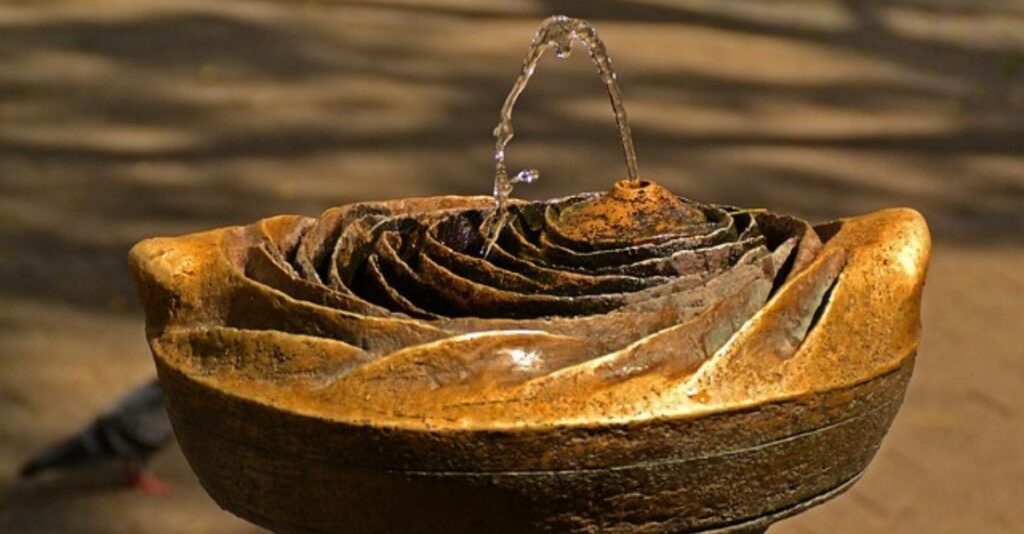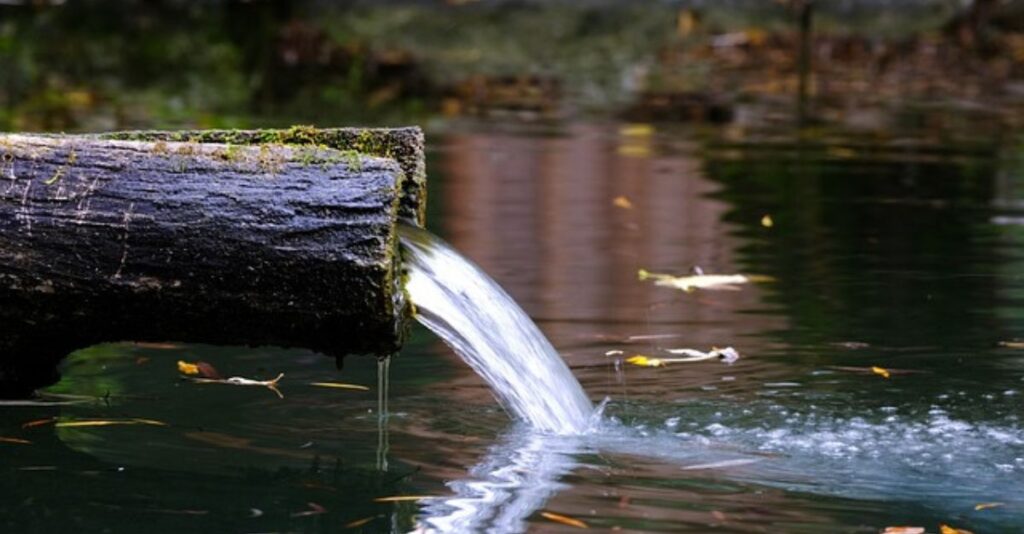Introduction
4 Common Mistakes to Avoid When Adding a Fountain to Your Pond
Adding a fountain to your pond can instantly boost its aesthetic appeal, improve water circulation, and create a calming ambiance. However, if not done correctly, it can lead to costly mistakes and maintenance issues.
4 Common Mistakes to Avoid When Adding a Fountain to Your Pond

1. Choosing the Wrong Fountain Size
One of the most frequent mistakes is installing a fountain that is either too big or too small for the pond. A fountain that’s too powerful can splash water out, while a weak one might not circulate water effectively.
Tip: Measure your pond’s diameter, depth, and water capacity. Choose a fountain with a flow rate that matches your pond’s size.
2. Incorrect Placement of the Fountain
Improper placement can affect the fountain’s performance and the pond’s overall look. If placed too close to the edge, water may splash out; if placed too deep, it may not work efficiently.
Tip: Position the fountain at the center of the pond or a visually strategic spot. Use a floating fountain if your pond has variable depths.
3. Ignoring Filtration and Pump Compatibility
Fountains require a consistent flow of clean water. Using a mismatched pump or skipping filtration can cause clogs and shorten the fountain’s lifespan.
Tip: Invest in a high-quality pond pump and a filter that handles your pond’s debris load. Match the pump’s gallons-per-hour (GPH) rating with the fountain’s requirements.
4. Neglecting Maintenance Needs
Fountains need regular upkeep. Algae buildup, debris, and mineral deposits can clog the nozzle and reduce the water flow.
Tip: Clean the fountain components regularly, especially during warmer months. Use a pond-safe algae control product and check for wear and tear on the pump.
Why Add a Fountain to Your Pond?
Before looking at common mistakes people make with pond fountains, it helps to understand why they’re so popular in pond design. A fountain isn’t just a pretty addition—it also brings practical benefits. Here’s why it’s worth considering:

• Enhances Visual Appeal
A fountain instantly becomes the centerpiece of your pond. The movement of water and the way it reflects light make your pond more attractive and lively. Whether it’s a gentle bubbling or an elegant spray, fountains add charm and sophistication.
• Improves Water Aeration
Fountains help circulate and oxygenate the water by bringing it into contact with air. This is crucial for fish and beneficial bacteria that keep your pond healthy. Aeration also helps prevent water from becoming stagnant.
• Reduces Algae Growth
Algae thrive in still, warm water. A fountain disrupts this by keeping the water moving and cooler, making it harder for algae to grow. Plus, increased oxygen levels from the fountain support a healthier ecosystem that naturally controls algae.
• Adds Soothing Sounds of Flowing Water
The gentle sound of running water is calming and can turn your pond into a peaceful retreat. It also helps mask unwanted noises like traffic or neighbors, making your outdoor space feel more private and serene.
• Attracts Birds and Wildlife
Birds, butterflies, and other creatures are naturally drawn to moving water. A fountain can turn your pond into a mini wildlife sanctuary, adding to the beauty and biodiversity of your garden.
Suggestions for a Successful Fountain Setup
To get the most out of your pond fountain—both in beauty and function—it’s important to set it up the right way. These tips can help you maximize efficiency, save money, and enjoy your fountain day and night:

• Choose an Energy-Efficient Pump to Save on Electricity
Your pump is the heart of the fountain. Choosing an energy-efficient model helps keep your electricity bills low, especially since fountains often run for long periods. Look for pumps labeled as “energy-saving” or “low wattage” to keep costs down without sacrificing performance.
• Go Solar for an Eco-Friendly, Low-Maintenance Option
Solar-powered fountains are a great green alternative. They don’t require wiring or electricity, which makes them easy to install and cost-effective over time. They work best in sunny areas and can still operate on cloudy days with built-in battery backup features.
• Use Decorative Lighting to Highlight the Fountain at Night
Add LED or solar-powered lights around or within the fountain to make it a stunning focal point after dark. Lighting not only boosts nighttime beauty but also enhances safety and creates a relaxing ambiance in your garden during evening hours.
• Install a Timer to Automate Fountain Operation
A timer takes the guesswork out of operating your fountain. Set it to run during certain hours of the day to save energy and extend the life of your pump. You can even program it to turn off at night or when you’re not home, ensuring worry-free maintenance.
Latest Trends in Pond Fountain Design
Pond fountains have evolved from simple water features into high-tech, stylish elements that enhance outdoor living spaces. Here are some of the most popular and exciting trends in modern pond fountain design:

• Floating Fountains with LED Light Displays
Floating fountains are designed to rest on the water’s surface, creating dramatic sprays and patterns. When paired with colorful LED lights, they offer a stunning visual display—especially at night. These are perfect for entertaining guests or adding a magical touch to your backyard.
• Smart Fountains with App Control and Remote Timers
Tech-savvy homeowners love smart fountains. These models can be controlled from your smartphone or tablet, allowing you to adjust water flow, lighting, and operation times with just a few taps. Remote timers help automate schedules, making your fountain both convenient and efficient.
• Natural Rock-Style Fountains for a Rustic Look
For a more organic and earthy vibe, many people are opting for natural rock-style fountains. These mimic the look of waterfalls or bubbling springs, blending seamlessly into the landscape. They’re ideal for creating a tranquil, nature-inspired setting.
• Solar-Powered Models That Require No Wiring or Outlets
Solar-powered fountains are a top choice for eco-conscious pond owners. They harness sunlight to operate, which means no cords, no wiring, and no need for nearby power outlets. They’re easy to install and maintain, and perfect for remote or off-grid locations.
Final Advice
Always plan your pond fountain installation carefully. Take into account the pond’s size, depth, and purpose. Avoid cutting corners with cheap equipment, and schedule regular maintenance to keep your fountain in top condition. When done right, a fountain can be a stunning centerpiece in your outdoor space for years to come.
Conclusion
A fountain can be the crown jewel of your small pond — but only if it’s installed and maintained properly. By avoiding these four common mistakes, you’ll ensure your pond remains beautiful, functional, and a joy to behold. Whether you’re upgrading an existing pond or starting fresh, keeping these tips in mind will lead to long-term success.
References
- The Pond Guy – Pond Fountain Buying Guide
- Aquascape Inc. – Fountain Maintenance Tips
- HGTV – Garden Water Features
- Bob Vila – Outdoor Fountains Guide
FAQs
Q1: Can I add a fountain to an existing pond?
Yes, you can! Just ensure your pond has a compatible power source and space for installation.
Q2: How much does it cost to add a fountain to a small pond?
Costs range from $100 to $1000+ depending on size, materials, and whether you choose solar or electric models.
Q3: Will a fountain help keep my pond clean?
Yes, it improves water circulation and oxygenation, which helps reduce algae and keeps the ecosystem balanced.
Q4: Can I use a fountain year-round?
In warm climates, yes. In cold areas, it’s best to winterize your fountain or remove it to prevent freezing damage.
Q5: How do I know which pump size is right for my fountain?
Check the fountain’s GPH (gallons per hour) requirement and choose a pump that matches or slightly exceeds it.

